An Unforgettable Kawagoe Day Trip Itinerary from Tokyo
Would you believe just 30 minutes from Tokyo lies an amazingly preserved Edo-era town? I’m about to explain why a Kawagoe day trip should be one of your first choices when selecting the best days trips from Tokyo. Like the hidden gem of Kurashiki, I have never been so excited to experience a place and my high expectations were easily exceeded!
Located in nearby Saitama Prefecture, a Kawagoe day trip from Tokyo is very popular with Japanese tourists but little known amongst foreigners like myself. As an invisible tourist, I have a slight obsession with visiting these lesser-known destinations and sharing my findings to help you explore beyond the popular sights, too.

I’ve been fortunate to visit Kawagoe twice now, once during early spring and again in summer. Some minor misfortunes lead to a serendipitous experience for me during my first trip, and I wouldn’t have changed a thing! Kawagoe 川越 is one of my favourite spots to include on any Tokyo itinerary.
If you’re interested in enriching your day trip to Kawagoe by learning the best things to do and extra tips for visiting, read on for more!
This post contains affiliate links, at no extra cost to you. I may receive a small commission if you click through and make a purchase.

Is Kawagoe worth visiting?
My answer to this question is yes, Kawagoe is definitely worth visiting! For those short on time, the 5-hour return trip from Tokyo to Kyoto for a day is just not feasible. You don’t have to travel that far to find a slice of old-world charm when a great alternative is nearby. For a Kyoto-like experience within an hour of Japan’s capital, Kawagoe is one of the best day trips from Tokyo for you.
With traditional old kurazukuri (storehouses), beautiful temples, shrines and a rich historic culture all of its own, Kawagoe (pronounced kawa-go-eh) has a nostalgic atmosphere punctuated by day trippers strolling around enjoying the sights in kimono. It’s easy to see why this previously wealthy merchant town has earned the nickname “Little Edo”.
TIP: If you’re trying to choose between Kawagoe vs Kamakura, my detailed guide to a Kamakura day trip will provide you with some insight into what to expect.
How to plan an unforgettable Kawagoe day trip itinerary
Most websites and blogs will tell you to arrive at Kawagoe by 11am and head back to Tokyo around 4pm. While this is absolutely ok, I’m actually glad this didn’t work out for me during my first visit. You see, the night before my day trip to Kawagoe I took this Shibuya at night bar hopping tour so understandably I had a slight hangover (oops).
Long story short, due to strong winds and train cancellations I arrived in Kawagoe at 1pm. This didn’t detract from me having an amazing time!
You could easily spend less time in Kawagoe if you zoom around to each spot, but if you’re like me and enjoy taking your time to soak up everything, 4-5 hours is ideal to see much of what this stunning little gem has to offer.

How to get to Kawagoe from Tokyo
How far is Kawagoe from Tokyo? The most popular and fastest way to get from Tokyo to Kawagoe is from Ikebukuro Station on either the Tobu-Tojo line or the Seibu line. The journey from Ikebukuro station takes around 30 minutes, more on pricing below.
From JR Shinjuku/Shibuya stations, you’ll need to switch at Ikebukuro station. When using local trains as opposed to Seibu or Tobu-Tojo express trains, the entire journey will take about 1 hour and costs about JPY 980 one way.
NOTE: To simplify what may sound confusing, note there are three train stations serviced by different companies in the Kawagoe area – JR Kawagoe, Seibu Hon-Kawagoe and Tobu Kawagoeshi. If you have a Japan Rail Pass you will only be covered on JR lines. Note that Hon-Kawagoe Station is the closest station to walk to the Kon Machi (Old Town) area.
TIP: If asking locals for directions back to the station at the end of the day, make sure you know which one to ask for! My guide to essential Japanese phrases for tourists will help you out here.
Once you’ve arrived at the Kawagoe station of your choice, it’s very easy to get around on foot as the city is relatively flat. If you prefer, the bus network is popular with locals as the furthest attraction is about 30mins walk from Hon-Kawagoe Station. The Kawagoe Discount Pass Premium allows you to ride the Tobu bus network for free.
Amazing things to do in Kawagoe
Are you ready to find out what makes Kawagoe so nostalgic and special? The order in which you visit the below Kawagoe attractions is up to you, however I’d recommend visiting in the order I suggest for some magic to happen towards the end of the day. Keep an eye out for my tips for visiting sprinkled throughout!
Kitain Temple
Our first stop on this Kawagoe day trip itinerary is Kitain Temple 喜多院. If you’re using Google Maps on your phone to get there from Hon-Kawagoe Station, it will direct you to the back entrance. The complex itself dates back to around 830 AD and it played an important role during the Edo period (1603 – 1868).
Unfortunately fire destroyed much of the temple in 1638. As the head priest of Kitain had befriended three Shoguns from this time (including Tokugawa Iyasu), some original buildings from Edo Castle (now Tokyo) were donated to help rebuild.
They were transported along the Arakawa and Shingashi Rivers from Edo to Kawagoe. It was a blessing in disguise as much of Edo Castle was destroyed and otherwise lost forever in the Great Kanto Earthquake of 1923.
An interesting sight at Kitain Temple is the 500 stone Gohyaku Rakan statues. These date back to the Edo period when Japan was closed off to the outside world. Due to this, the artists who were commissioned to create these sculptures didn’t hold back in creating joyful-looking characters rather than depictions of usually serious Buddhist themes. Their facial expressions are all different!
TIP: If you’re familiar with the Seven Lucky Gods in Japanese religion, Daikokuten is enshrined here at Kitain Temple. He’s the god believed to bring good luck and prosperity in business.


Kawagoe Naritasan Temple
Towards the end of the Edo period, the story of Kawagoe Naritasan temple 川越成田山 began when a local farmer became blind in both eyes. He tried to take his life on several occasions unsuccessfully, which he took as a sign from the gods he should become a priest.
After praying and fasting at the temple, he slowly regained his eyesight and then dedicated his life to spreading the word.
Ebisu, another one of the Seven Lucky Gods is believed to be enshrined here. He’s the deity for agriculture and patron for fishing as he holds a red tai (sea bream) – thought to be the most lucky and highly regarded in Japanese culture.
TIP: You may also see Ebisu’s figure at Japanese restaurants that sell fish as tai also represent an abundance in meals. Keep this mind down the page as I reveal where you can catch your own lucky tai!

Kawagoe Kumano-jinja
Located along Taisho Romanyume-dori, I stumbled across this during my second trip and was drawn to the 3-legged crow motif and hydrangeas surrounding the shrine. Believed to bring blessings in love and marriage, Kawagoe Kumano-jinja has three deities enshrined and dates back to the 16th century.
Besides the entry torii gate lies a pebbled path to stimulate blood circulation using pressure points in the soles of your feet when walking barefoot.
The 3-legged crow, Yatagarasu, was believed to be the god of guidance. I thought it was a phoenix at first until I later researched it. There are instruction boards around the shrine for different ways to make wishes to the gods, and many different omikuji (fortune papers) even based on your blood type! You can read more about the shrine here.


Kura no Machi (Old Warehouse District)
What is Kawagoe known for? Its preserved old town! From Naritasan Temple, make your way towards the Kura no Machi 蔵造りの町並み area. With its streets lined with traditional wooden buildings and aura of old-world charm, it will quickly become obvious why this area is referred to as Ko-edo or Little Edo, and is a must for your Kawagoe itinerary.
During the Edo period, this area was a thriving hub for trade. You’ll find evidence of this today in the form of elaborate, decorative roof tiles and clay warehouses that were adopted by the wealthy instead of wood to protect their goods from fire. It obviously worked as these warehouses survived the Great Fire of Kawagoe in 1893!
It’s important to note at the time clay warehouses were incredibly expensive to build, but wealth flourished here in Kawagoe so many merchants could afford the investment. This style of building was not common throughout Japan and the only other place I have personally seen a similar style is in Kurashiki, Okayama.
TIP: This area, combined with the bell tower, reminded me a lot of an amusement park in Nikko called Edo Wonderland. Featuring traditional performances and fun activities, it’s another great day trip from Tokyo if you’re interested in learning about life in Japan during the Edo period!

Kurazukuri Street
Looking for the Kawagoe old street? Kurazukuri Street is the most popular in the Old Warehouse District and perhaps the most photographed in town. This traditional building style (especially the clay buildings) style is called kura, short for kurazukuri. Now you know this little tidbit of history, you’ll also notice a majority of the most opulent-looking stores can be found along Kurazukuri Street (Kurazukuri no Machinami).
TIP: If you’re looking for what to buy in Kawagoe, this is the ideal shopping street as it’s lined with local retailers selling a wide range of goods.


Toki no Kane Bell Tower
Towering 16 meters above the old pavements below, the wooden bell tower Toki no Kane 時の鐘 is a beautiful icon of Kawagoe and Japan’s cultural heritage. The original tower dated back to the 17th century, although unlike the neighbouring clay warehouses it was turned to ashes during the Great Fire of Kawagoe in 1893.
Today’s tower was rebuilt after the fire and its giant bell sounds four times per day at 6am, 12pm, 3pm and 6pm. The bell itself is about 700kgs!
TIP: Keep an eye out for the decorative drain covers featuring Toki no Kane and listen out for the loud gongs that have been marking the hour since the Edo period.


Kashiya Yokocho (Penny Candy Alley)
Do you literally love being a kid in a candy store? The most fun of the Kawagoe things to do is explore an entire laneway dedicated to them! From Toki no Kane and Kurazukuri Street, head on over to Kashiya Yokocho 菓子屋横丁 (Penny Candy Lane) to unleash your sweet tooth in these dagashiya (old-school candy stores). Eating your way along here is one of the most fun things to do in Kawagoe!
Kashiya Yokocho began during the early Meiji period (1868 – 1912) producing traditional sweets and candies for the local area. After the Great Kanto Earthquake of 1923 that caused widespread damage in Tokyo and neighbouring regions, Kashiya Yokocho flourished by filling the void – producing and supplying candies for the whole of Japan.
At its peak, there were over 70 stores lining the pavements of this historical laneway, although today there are about 20 still producing sweets in the traditional way. It’s been listed as one of the 100 Scent Sceneries by the Ministry of Environment as a pleasant-smelling spot (yes, this is a thing in Japan).
TIP: Kawagoe is famous for purple sweet potatoes. Penny Candy Lane is a neat little place to try the local specialty ice cream infused with purple sweet potato and topped with fried sweet potato chips. There are also massive packaged sweet potatoes for sale, around 1 metre in length!
TIP: Keep an eye out for dango, senbei and other Japanese snacks. I bought a full bag of goodies and it only cost me JPY 600 – I wish I had bought more. My full guide to snacks from Japan is a quick crash course to what these treats are and the interesting history behind them!
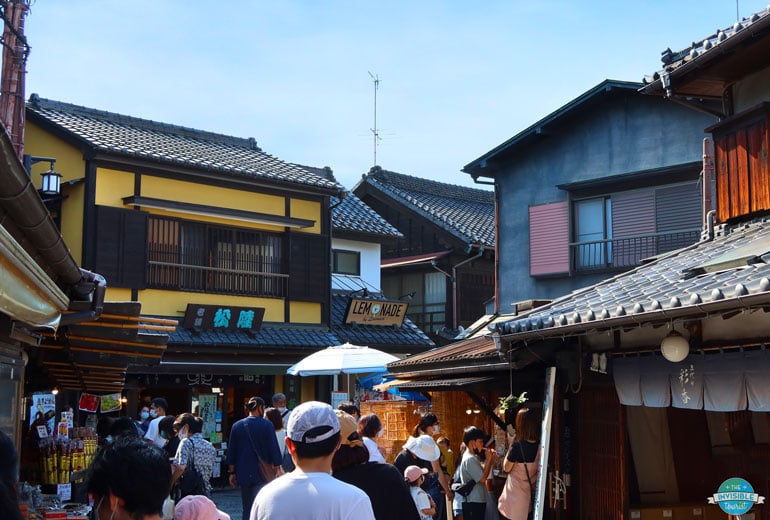


Kawagoe Hikawa Shrine (Kawagoe Hikawa-jinja)
Next stop on this day trip to Kawagoe itinerary is the magical Hikawa Shrine 川越氷川神社. Spending time here is one of the most popular things to do in Kawagoe for young Japanese couples, although I believe it’s a must-see even if you’re travelling solo.
This was the place I was most looking forward to visiting during my day trip to Kawagoe and at this point in the day, it couldn’t have been better. I’m confident in saying Hikawa Shrine is one of my favourite in all of Japan. Here’s why!
History that makes Kawagoe Hikawa Shrine so special
Kawagoe Hikawa Shrine is about 1,500 years old – incredible to think about! There are five deities enshrined here, and two sets of these deities are married. This is incredibly rare in Japan so worshippers believe the shrine will grant wishes regarding luck in love, happy marriages and family blessings.
There are two entrances to the shrine, one along the main Prefectural 51 Road facing south with a stone torii gate. The other is a huge vermilion torii towering 15 metres above the shrine’s east entrance – it’s the largest wooden torii gate in Japan. There are a number of things to experience at Kawagoe Hikawa Shrine so I’ll break them down for you.
Summer at Kawagoe Hikawa Shrine
You’ll find glorious rows upon rows of pinwheels at the entranceway into the shrine, as well as a tunnel within its grounds. Spinning pinwheels represent one of the Buddhist teachings about reincarnation – It’s believed offering a windmill to Buddha allows loved ones and ancestors to be reborn into a beautiful world.
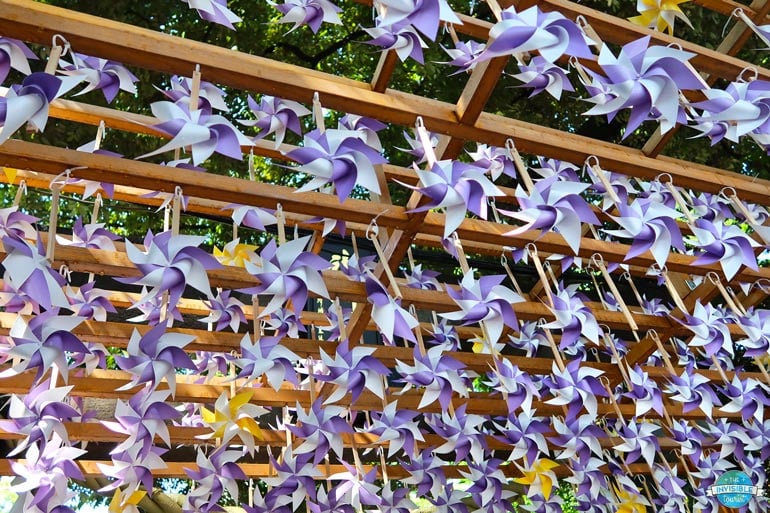
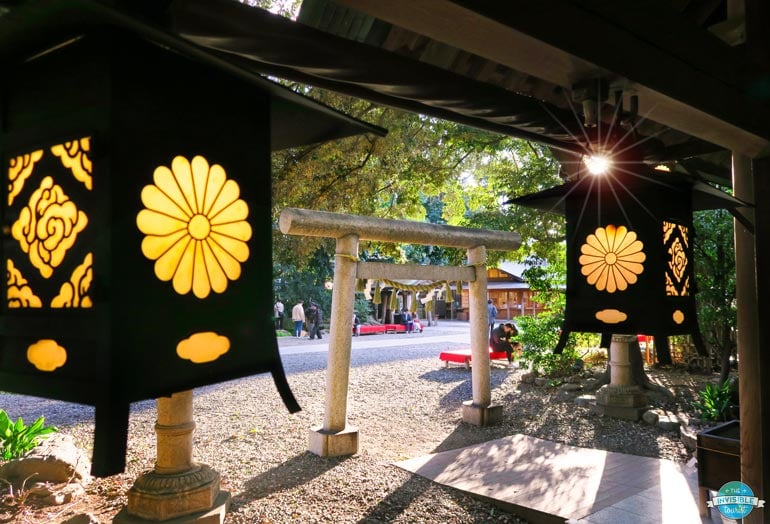
Fishing for Luck
Remember earlier how I mentioned the lucky red tai in Japanese culture? I was immediately drawn to the spot where you can fish for your own! Omikuji are a form of fortune telling and a fun little way to see if you can improve your luck with the paper fortune folded inside.
Pay JPY 300 into the coin box and use the miniature fishing rod to capture a tai from hundreds in the basket. The basket of pink tai are believed to help you meet your special someone. The red tai will determine your luck in the next year ahead. During my visits, there were more young people lined up for the pink tai rather than red!



Ema Tunnel of Love
Towards the left of the lucky tai, make your way past the unwanted fortunes neatly discarded at the shrine and over to the Tunnel of Love. Thousands upon thousands of ema (wooden plaques with wishes) decorate the lengthy tunnel, many of them with pictures of happily married couples and babies.
Around this time of the afternoon the sun’s golden rays slip through the gaps in the cluttered ema creating an enchanting atmosphere, even if you’re not much of a spiritual person. I thought of the countless couples from centuries passed and hoped their wishes had come true.
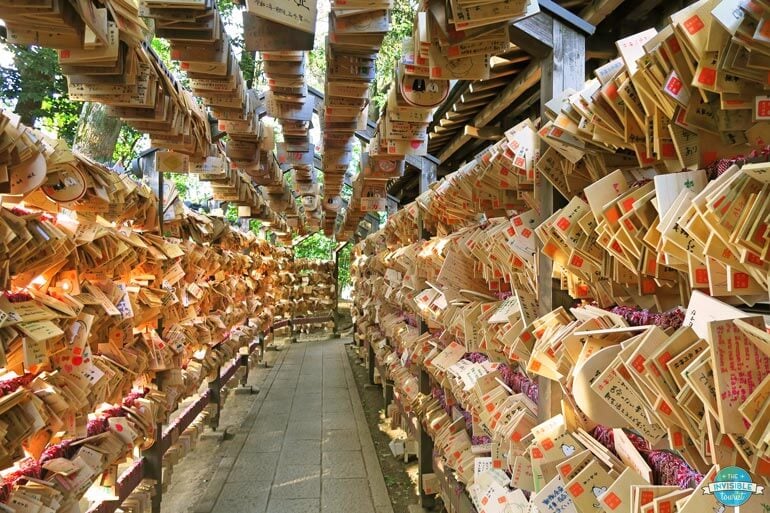

Sacred Trees
Behind the ema tunnel are two massive trees, joined together with tassled rope. These trees are over 600 years old and are considered sacred. A figure-eight pathway encircles them and it’s believed by walking around the trees you’ll gain a spiritual power.
Hikaru Kawa River paper doll purification
This small river has ties to reason why this location was selected for Hikawa Shrine over 1,500 years ago. You can practice a cleansing ritual called hitogata nagashi where you blow three times on a small paper doll, rub it onto your clothing then release it into the river to dissolve away your sins. The full instructions can be found on a small wooden box housing the paper dolls besides the river.
TIP: During July to September, Kawagoe Hikawa-jinja hosts the Enmusubi Furin Festival. 2,000 colourful glass windchimes are suspended from a lattice tunnel and worshippers can write their wish on a wooden card and attach to a chime. In Japanese folklore it’s believed that wind could transfer people’s feelings and these well-wishes would be passed onto loved ones.

Shingashi Riverbed Cherry Blossoms
If your Kawagoe day trip falls during the cherry blossom season, you won’t want to miss the jaw-dropping Shingashi River 新河岸川 cherry blossom trees. The river runs directly behind Hikawa Shrine and is completely lined with gorgeous cherry trees, just like the more popular (and very crowded) Nakameguro River back in Tokyo or the Philosopher’s Path in Kyoto.
As it had been a long-term dream of mine to experience cherry blossoms in Japan, I now have natsukashii when remembering back to the day I saw them along the riverbed (learn the meaning of this beautiful Japanese word and more).
TIP: If you’re hoping to visit during the cherry blossom season, my detailed guide to spring in Japan is packed with tips for more places to go, alternatives to popular spots, what to pack and how to avoid the huge crowds!
TIP: Known as “sakura ships”, it’s even possible to take an old-fashioned boat ride with a local to view beneath the blossoms as you float by.

OPTIONAL: Pass by Toki no Kane towards the end of your Kawagoe day trip
As I can be pretty useless in having a sense of direction without my phone’s GPS, this next part happened to me by complete accident. I couldn’t believe my eyes when I stumbled upon Toki no Kane again on my way back to the station.
A tall, black silhouette stood in stark contrast to a vibrant purple-orange sky that complimented the golden glow of lanterns beginning to light up the storefronts. A nostalgic feeling completely washed over me and I was humbled to think about the number of times the sun has set over this very town throughout the centuries. How lucky was I to have this experience, even if it was just one day!
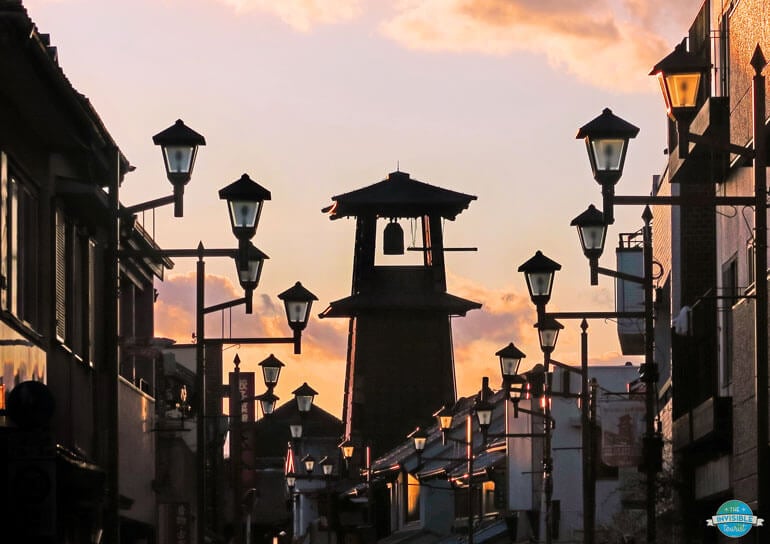
Taisho Roman-dori (Dream Street)
As you make your final approach to Hon-Kawagoe station, make sure to pass through Taisho-Roman Street 大正浪漫夢通り (Taisho-Roman yume). It’s named after the Taisho period (1912-1926).
If you’re an architecture fan like me, you’ll immediately notice tell-tale Art Deco styles adorning these buildings from stained-glass windows to angular concrete columns. This street was a popular setting for old Japanese movies.
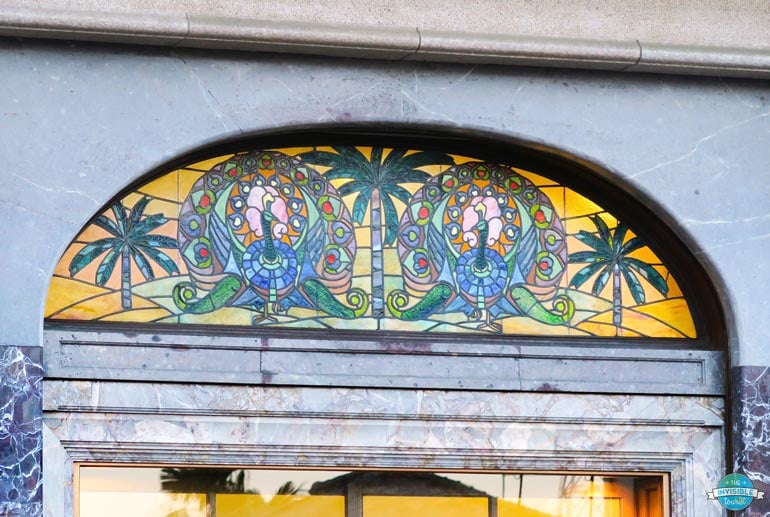
Crea Mall
As the sun set on what had been a wonderful day, I had to do a double-take when passing through the outdoor Crea Mall クレアモール on the approach to Hon-Kawagoe Station. It reminded me so much of the famous Dotonbori in Osaka.
Yakitori and izakaya restaurants were opening, the aromas of sizzling street food passing through the air; the countless illuminated store signs vying for my attention as well as the lure of karaoke bars and local retailers. If you’d like to grab dinner before heading back to Tokyo, this seems like one of the best places!


If you have extra time on your Kawagoe day trip
- Rent a kimono or yukata from Koedo Vivian to stroll around in for the day.
- Pay a visit to Renkeiji Temple, where the guardian deity of luck and longevity is enshrined. It’s been a great blossom-viewing spot since the 16th century.
- Explore what’s left of the old Kawagoe Castle grounds. The castle was lost to the Great Fire of Kawagoe.
- Visit the Osawa Residence, a former merchant residence now an Important Cultural Property of Japan.
- Admire the matsuri floats at Kawagoe Festival Museum. The festival dates back to the 17th century.
- Don’t miss Koedo Kurari old sake brewery if you’re a lover of Japan’s national beverage. It’s been in operation for over 120 years.
More things to do in the Saitama area
- On the way to or from Kawagoe, why not take a slight detour to Tokorozawa Sakura Town? Lesser-known to foreign visitors, you can buy advance tickets to teamLab’s Resonating Life in the Acorn Forest and Kadokawa Musashino Museum which features the 8 metre-high Bookshelf Theatre and a Manga and Ranove Library. As its name implies, Sakura Town is popular with locals during the sakura (cherry blossom) season!


Events in Kawagoe, Saitama, Japan
Kawagoe was a host venue for golf during the Tokyo Olympic Games. Check to see if a special event will going to coincide with your trip, more info about these events here:
| Spring | • Koedo Kawagoe Spring Festival |
| Summer | • Koedo Kawagoe Fireworks Display • Enmusubi Furin Festival at Hikawa Shrine • Kawagoe Million Lights Summer Festival |
| Autumn | • Sweet Potato Harvest • Kawagoe Matsuri Festival • Koedo Kawagoe Grand Tea Ceremony |
| Winter | • Hatsudaishi: New Year’s Daruma Market • Seven Gods of Good Fortune Tour |

Extra tips and advice for getting around Tokyo
Will you be spending a few days in Tokyo? Don’t forget to pick up your Suica IC card, portable pocket wifi or SIM card (here’s how to rent pocket wifi) and calculate if the Japan Rail Pass will be worth it for the duration of your trip.
For even more tips and advice, head on over to my guide about places to go in Tokyo by neighbourhood for differences in the Tokyo transport system and unique cultural experiences. Also, check out my article to hidden gems in Tokyo for lesser-known places in Japan’s capital to get your trip planning off to a good start.
Where to stay in Tokyo
The best places to stay in Tokyo for easy access to Kawagoe are Ikebukuro, Shinjuku or Shibuya. For my honest reviews on all the hotels I’ve personally stayed in during my trips, take a look at my guide for where to stay in Tokyo. My complete 6 days in Tokyo itinerary will also help inspire your visit.
Concluding this Kawagoe day trip itinerary from Tokyo
That’s a wrap for this Kawagoe travel guide! Who would have thought this wonderful Edo-era town was within reach of Japan’s bustling capital? I was thoroughly impressed with the beautiful preservation of Kawagoe, despite my high expectations.
Now you know all the amazing things to experience here, how many of these would you love to see someday? Let me know in the comments below!
Looking for further inspiration? I have many more detailed guides on my Japan travel blog. From finding hidden gems, detailed city guides, best time to visit for cherry blossoms and more, I have your 2 week Japan itinerary, 3 week Japan itinerary, 10 day Japan itinerary and even Kyushu road trip itinerary covered.
While you’re here – if you found this guide to Little Edo Tokyo helpful, why not also take a look at my separate guides for Japan’s off the beaten path destinations, more hidden gems and reviews of more cultural experiences?
Feeling social? Explore beyond the main touristy sights with my dedicated Japan Off the Beaten Path Facebook Group or come and join me on Facebook, Pinterest, TikTok and Instagram for more travel inspiration!
Until next time,

Do you love Japanese sweets, snacks and candies?
Read my Tokyo Treat Review and get popular Japanese snacks delivered here, or read my Sakuraco review and get traditional Japanese sweets delivered here!
Like it? Pin it! 📌


This guide to a Kawagoe day trip from Tokyo contains some affiliate links, at no extra cost to you. I may earn a small commission if you decide to make a purchase and if you do, thanks for your support! This helps with the costs of running my blog so I can keep my content free for you. As always, I only recommend a product or service that I genuinely love and use myself!

Hello! Would it be a good spot to spend the night as well as explore doing the day?
Hi Sandra! I think it would be pretty quiet in the night and early morning, which would be great if that’s what you were after 😊
Hi Alyse. Thanks for all your tips re visiting Kawagoe. We are planning on visiting late October this year and was wondering with daylight hours being shorter what time would you suggest would be best to arrive to complete your suggested itinerary and catch all the beautiful lights coming on towards evening. Thanks again.
Thanks, Doris!
In late October, the sun sets around 5pm in the Tokyo/Kawagoe area. So I’d recommend heading there early to mid-morning, that will leave you plenty of time to take in all these sights and walk back towards the station for dinner around sunset 😊 I hop that helps and you enjoy Kawagoe!
What a lovely place! Never knew something like this was close to Tokyo. Thank you for sharing, I want to visit during my summer trip later this year.
It’s surprisingly close, isn’t it?
I absolutely adore Kawagoe, it’s so much fun and has one of the best vibes in Japan in my opinion.
I hope you enjoy visiting “Little Edo” as much as I do, have fun!